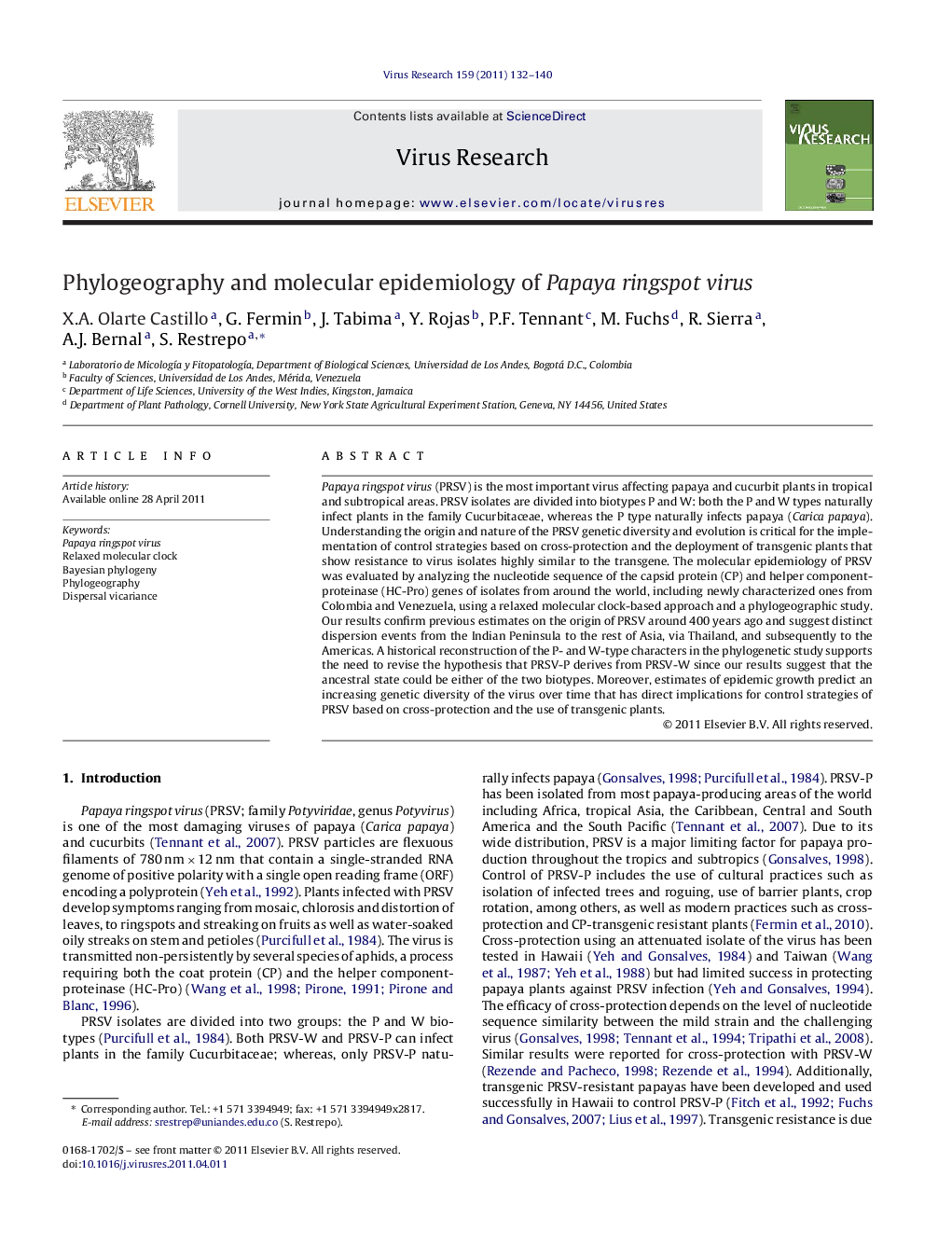| Article ID | Journal | Published Year | Pages | File Type |
|---|---|---|---|---|
| 3429167 | Virus Research | 2011 | 9 Pages |
Papaya ringspot virus (PRSV) is the most important virus affecting papaya and cucurbit plants in tropical and subtropical areas. PRSV isolates are divided into biotypes P and W: both the P and W types naturally infect plants in the family Cucurbitaceae, whereas the P type naturally infects papaya (Carica papaya). Understanding the origin and nature of the PRSV genetic diversity and evolution is critical for the implementation of control strategies based on cross-protection and the deployment of transgenic plants that show resistance to virus isolates highly similar to the transgene. The molecular epidemiology of PRSV was evaluated by analyzing the nucleotide sequence of the capsid protein (CP) and helper component-proteinase (HC-Pro) genes of isolates from around the world, including newly characterized ones from Colombia and Venezuela, using a relaxed molecular clock-based approach and a phylogeographic study. Our results confirm previous estimates on the origin of PRSV around 400 years ago and suggest distinct dispersion events from the Indian Peninsula to the rest of Asia, via Thailand, and subsequently to the Americas. A historical reconstruction of the P- and W-type characters in the phylogenetic study supports the need to revise the hypothesis that PRSV-P derives from PRSV-W since our results suggest that the ancestral state could be either of the two biotypes. Moreover, estimates of epidemic growth predict an increasing genetic diversity of the virus over time that has direct implications for control strategies of PRSV based on cross-protection and the use of transgenic plants.
